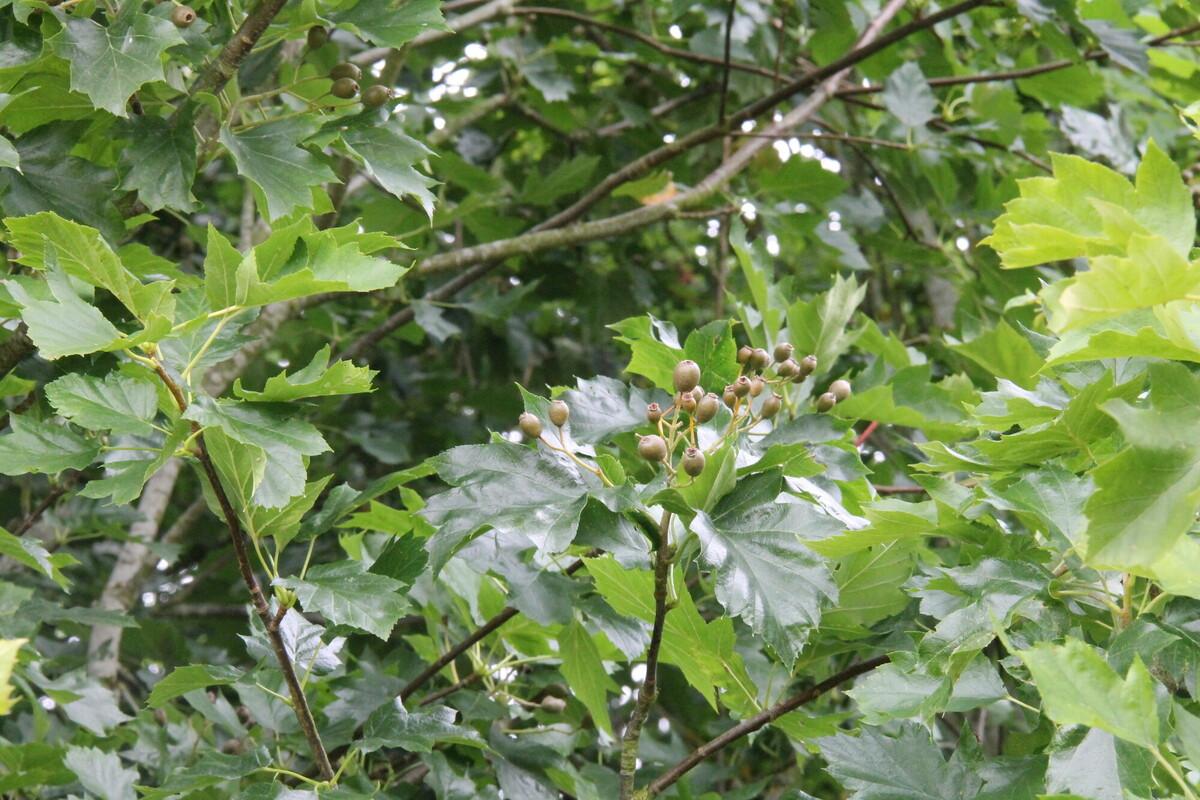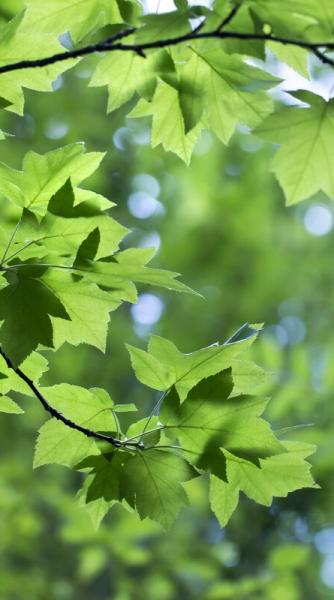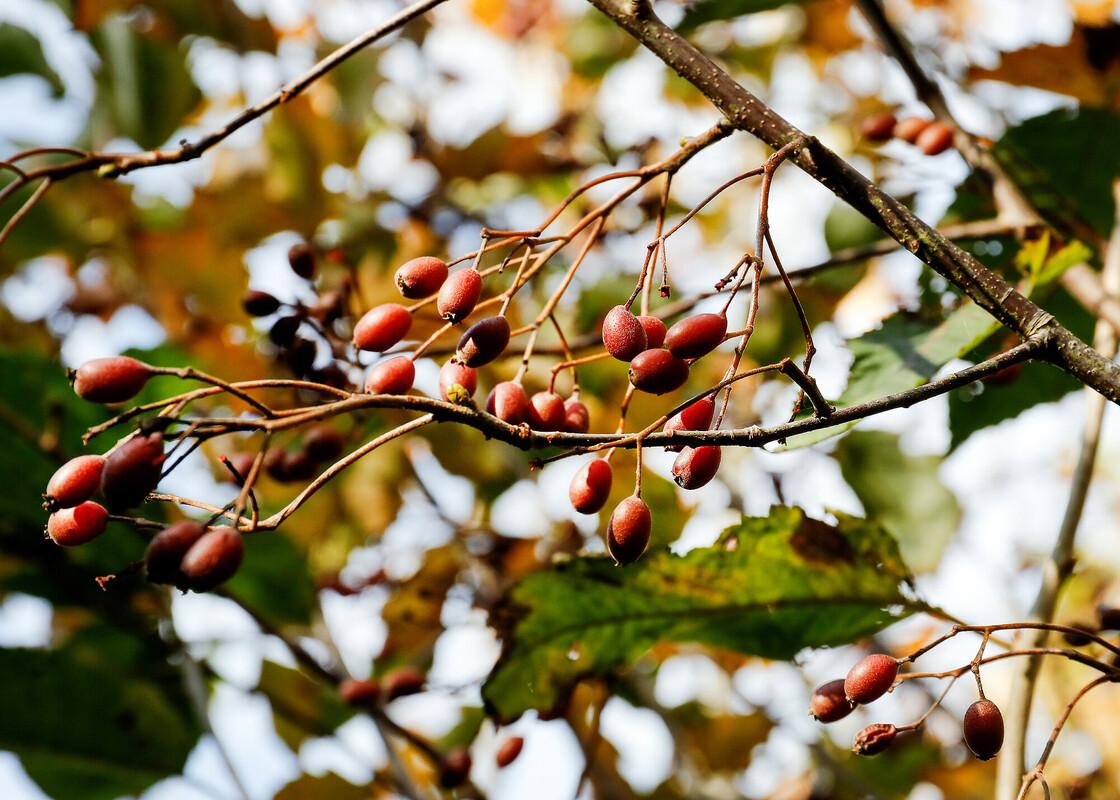
Species Name: Sorbus torminalis
The wild service tree was once seen across the country when forests covered the landscape. Unfortunately, due to large forest clearance and changes in land use it is now rarely found outside of ancient woodlands.
The wild service tree has grey-brown bark with scaly oblong plates and grows to be around 25m tall.

It has sharply lobed leaves that are shiny underneath and veins radiating from the centre vein, sometimes mistaken for maple leaves.

The alternate buds are small round and green often likened to a pea. The flowers appear in late spring and are creamy white in colour, and in autumn brown berries ripen sometimes known as ‘chequers’.

Wild service trees are found across Europe, Africa and Asia including the UK. It is often found in ancient woodland in clay and lime-based soils. Locally the wild service tree can be found in Dorothy’s Wood and the spring blossom is a beautiful sight to see.
The berries of the wild service tree were often used to make beer leading to it being known as Chequers. It is also thought that early physicians used the fruits to treat colic and dysentery.
The fruits of the wild service have been used to flavour alcoholic drinks.
The flowers provide pollen and nectar for spring pollinators, the leaves are eaten by moth caterpillars, and the berries are eaten by birds. The wild service tree is also used as an ancient woodland indicator.
Although the wild service can reproduce by pollination it can also propagate through ‘suckering’. This is where shoots known as suckers arise from buds on the roots of a wild service tree allowing another tree to form.
2% of the trees we are planting in the Forest this season are wild service trees.




